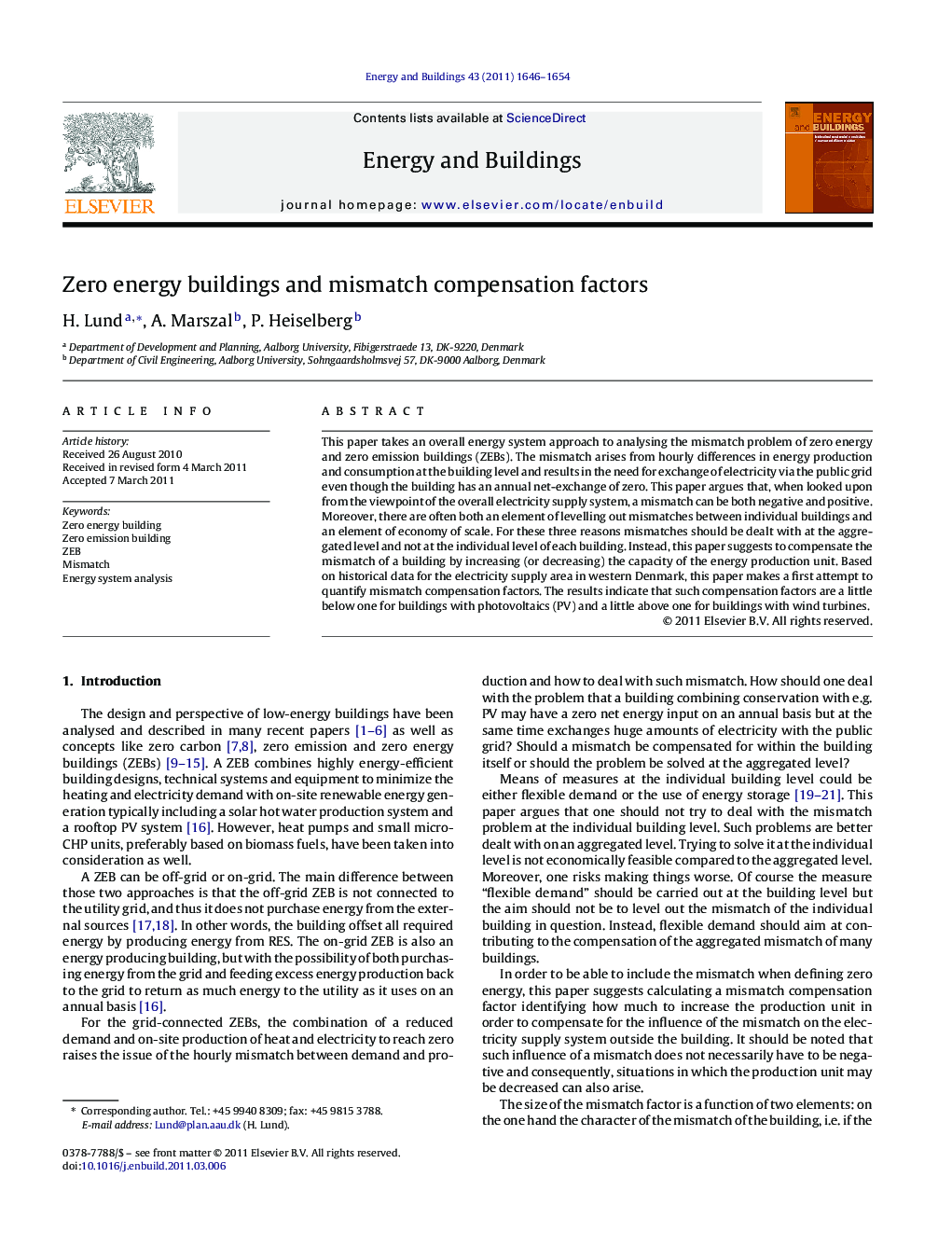| کد مقاله | کد نشریه | سال انتشار | مقاله انگلیسی | نسخه تمام متن |
|---|---|---|---|---|
| 264521 | 504103 | 2011 | 9 صفحه PDF | دانلود رایگان |

This paper takes an overall energy system approach to analysing the mismatch problem of zero energy and zero emission buildings (ZEBs). The mismatch arises from hourly differences in energy production and consumption at the building level and results in the need for exchange of electricity via the public grid even though the building has an annual net-exchange of zero. This paper argues that, when looked upon from the viewpoint of the overall electricity supply system, a mismatch can be both negative and positive. Moreover, there are often both an element of levelling out mismatches between individual buildings and an element of economy of scale. For these three reasons mismatches should be dealt with at the aggregated level and not at the individual level of each building. Instead, this paper suggests to compensate the mismatch of a building by increasing (or decreasing) the capacity of the energy production unit. Based on historical data for the electricity supply area in western Denmark, this paper makes a first attempt to quantify mismatch compensation factors. The results indicate that such compensation factors are a little below one for buildings with photovoltaics (PV) and a little above one for buildings with wind turbines.
► The paper reports a tool and methodology for the analysis of the influence of electricity exchange from Zero Energy Buildings on the overall energy system.
► The paper qualify and quantify why such exchange should be best dealt with at the system level and not at the individual building level.
► The paper introduce a compensation factor for including exchange of electricity in the definition of Zero Energy Buildings.
► The paper makes a first attempt to calculate the size of such compensation factor for Zero Energy Buildings with PV and Wind.
Journal: Energy and Buildings - Volume 43, Issue 7, July 2011, Pages 1646–1654